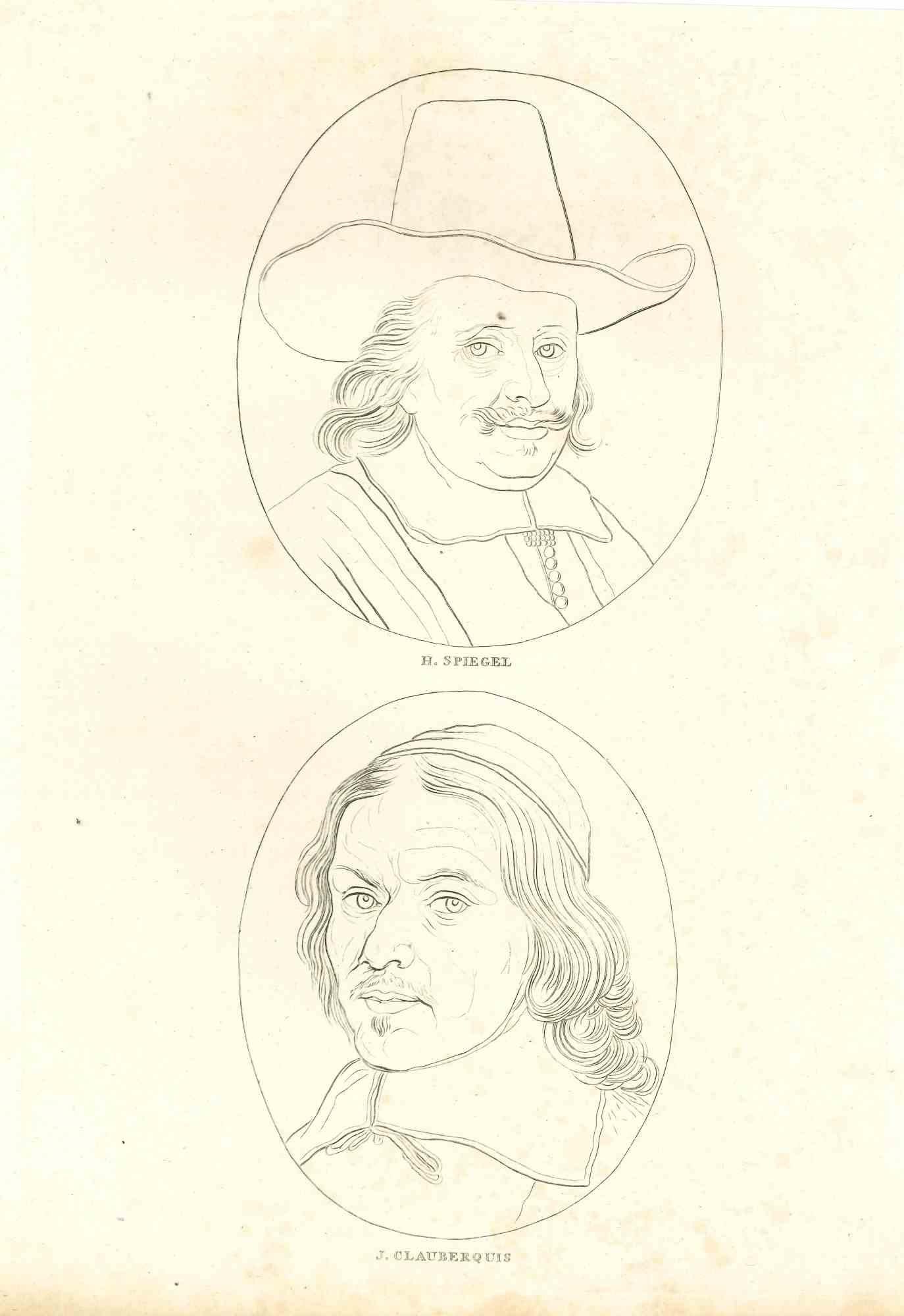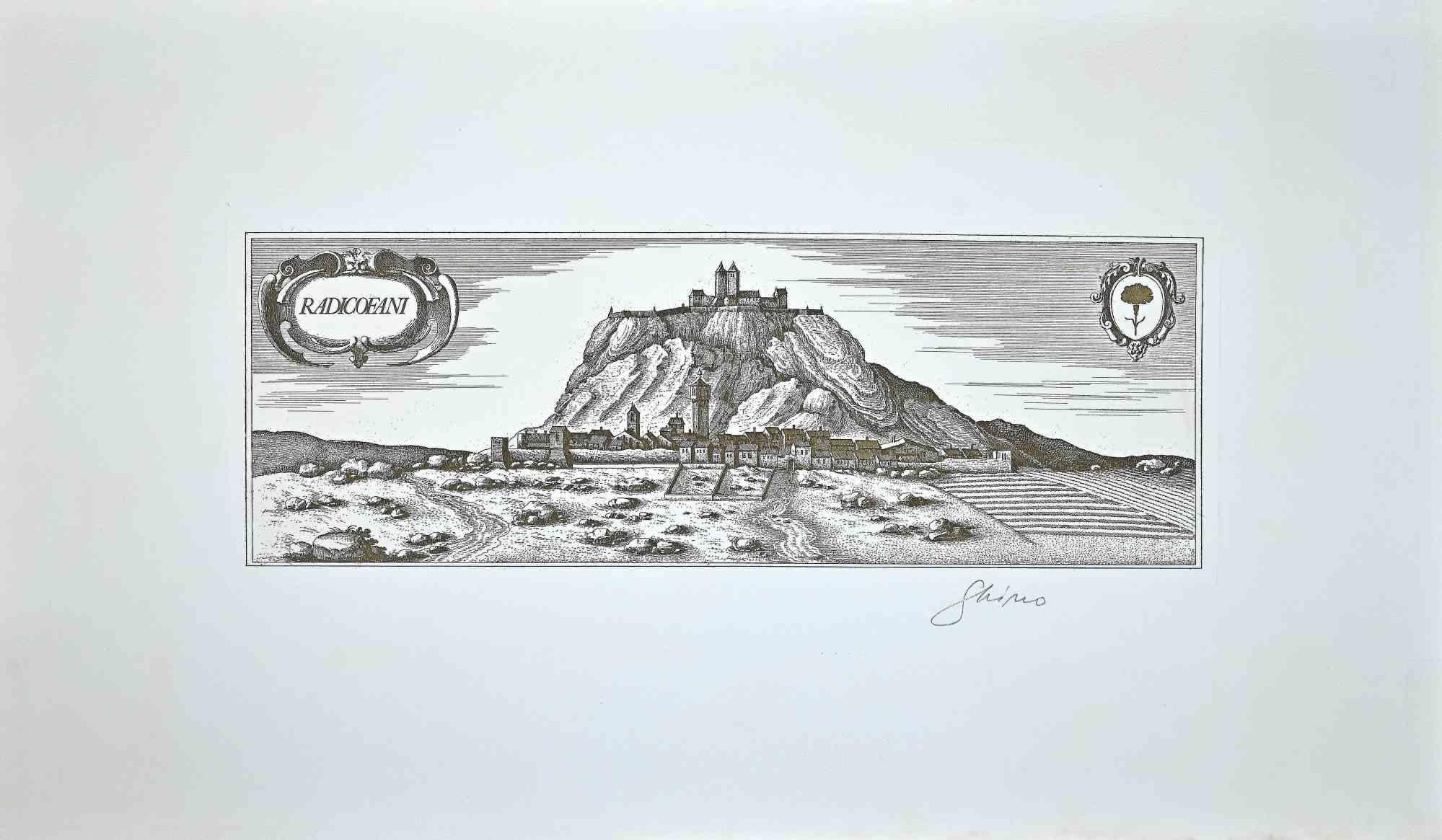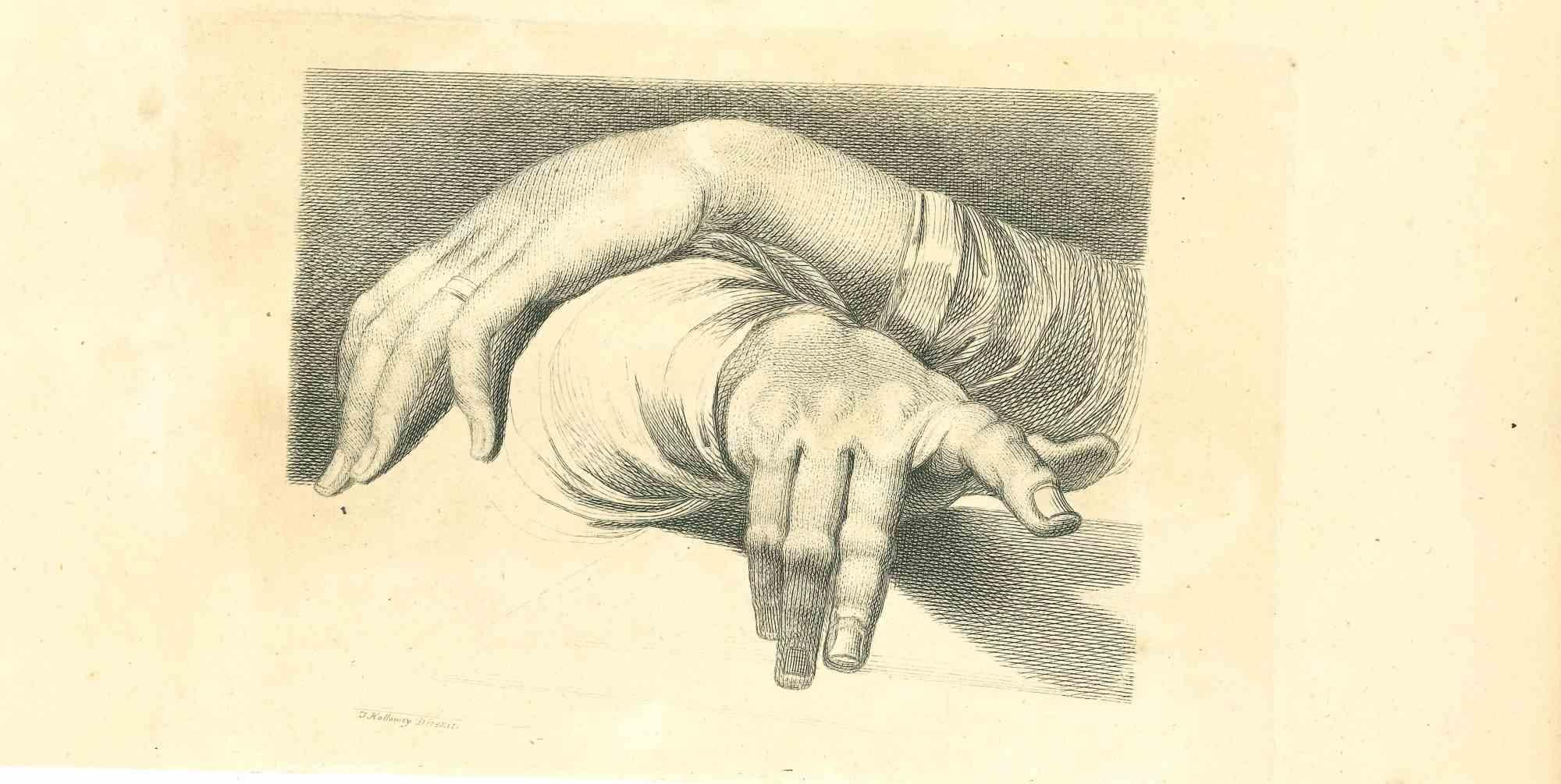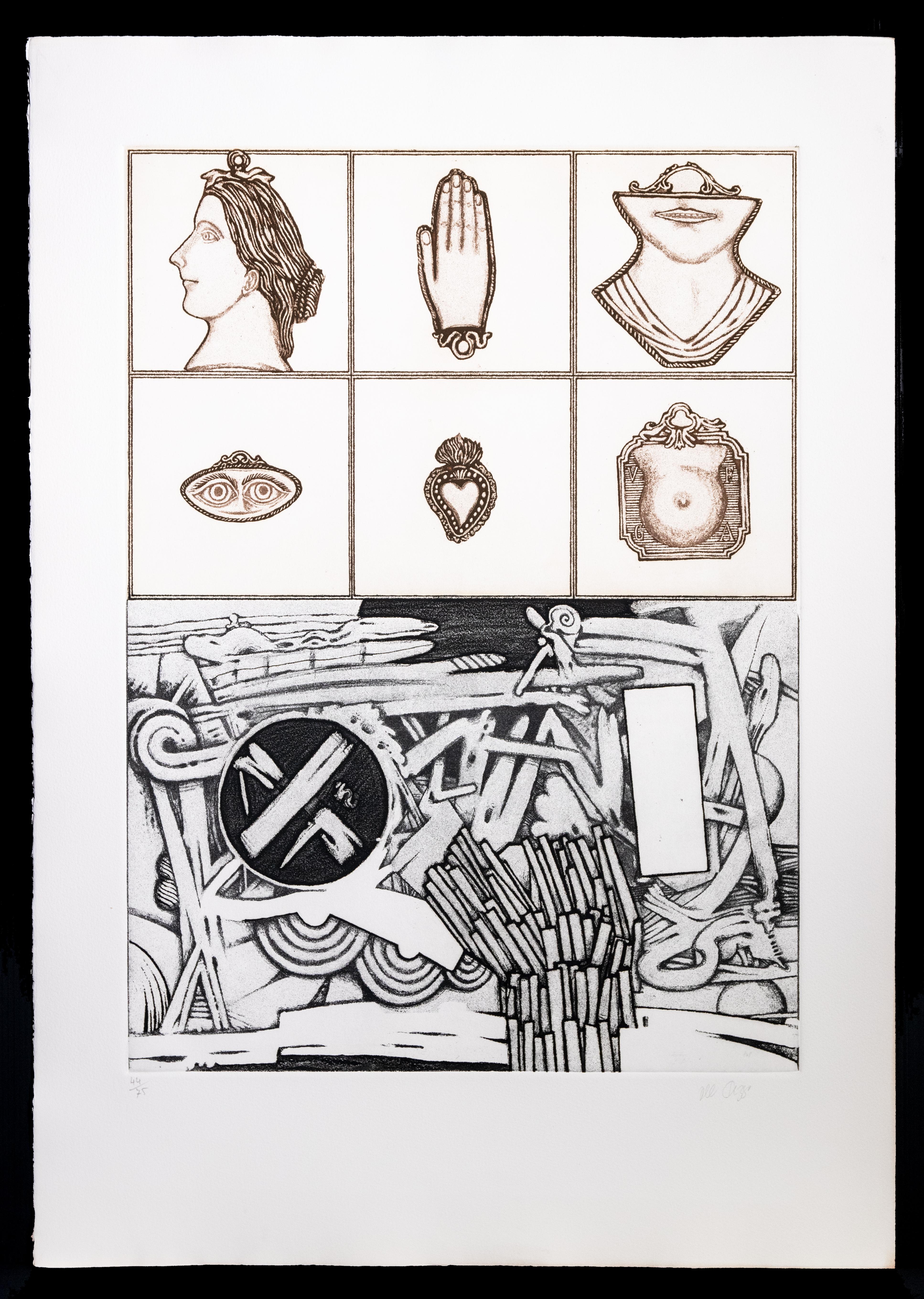Orovida PissarroCeremonial Dance by Orovida Pissarro, 1927 - Etching Print1927
1927
About the Item
- Creator:Orovida Pissarro (1893 - 1968)
- Creation Year:1927
- Dimensions:Height: 7.56 in (19.2 cm)Width: 9.77 in (24.8 cm)
- Medium:
- Period:
- Condition:
- Gallery Location:London, GB
- Reference Number:1stDibs: LU261212624362
Orovida Pissarro
Orovida Pissarro, the only child of Lucien and Esther Pissarro, was the first woman in the Pissarro family to become a professional artist and the first Pissarro of her generation to take up painting. Born in Epping, England, in 1893, she lived and worked predominantly in London, where she was a prominent member of several British arts clubs and societies.
Orovida first learned to paint in the Impressionist style from her father and, after a brief period of formal study with Walter Sickert in 1913, she renounced formal art schooling.
Throughout her career, Orovida always remained outside mainstream British art movements. Much to Lucien's disappointment, she soon turned away from naturalistic painting and developed an unusual style that combined elements of Japanese, Chinese, Persian and Indian art. Her rejection of Impressionism, which, for the Pissarro family, was a way of life, and her simultaneous decision to drop her famous last name and use simply Orovida as a nom de peintre, reflected a desire for independence and distance from the family legacy, of which she nevertheless remained proud.
Orovida's most distinctive works are her paintings from the 1920s and 1930s in gouache (she called her mixture body color) and tempera, applied in thin, delicate washes to silk, linen, paper or gold leaf and embellished with brocade borders. These elegant and richly decorative works generally depict non-Western subjects, for example: Mongolian horseback riders, African dancers and Persian princes, often engaged in activities such as dancing or hunting rituals.
The second half of Orovida's painting career is marked by a dramatic change in both style and subject matter. In the mid-1940s, she began to embrace contemporary subjects from everyday life and returned to a more naturalistic style. Her new style was more suited to oils, and thus, she returned to that medium.
Over the course of her life, Orovida was aware of the mixed blessing of having famous artists in the family; not only a grandfather and father but also four uncles, and towards the end of her life, she was instrumental in developing the Pissarro family archive that her mother had established at the Ashmolean Museum in Oxford.
(Biography provided by Stern Pissarro Gallery)
- ShippingRetrieving quote...Ships From: London, United Kingdom
- Return PolicyA return for this item may be initiated within 7 days of delivery.
- Chatter by Orovida Pissarro - EtchingBy Orovida PissarroLocated in London, GBChatter by Orovida Pissarro (1893-1968) Etching 26 x 19 cm (10 ¹/₄ x 7 ¹/₂ inches) Signed and dated lower right Orovida 1927 Inscribed lower left Trial proof no. 18/25 and titled lower middle Artist biography: Orovida Camille Pissarro, Lucien and Esther Pissarro’s only child, was the first woman in the Pissarro family as well as the first of her generation to become an artist. Born in Epping, England in 1893, she lived and worked predominantly in London where she became a prominent member of several British arts clubs and societies. She first learned to paint in the Impressionist style of her father, but after a brief period of formal study with Walter Sickert in 1913 she renounced formal art schooling. Throughout her career, Orovida always remained outside of any mainstream British art movements. Much to Lucien's disappointment she soon turned away from naturalistic painting and developed her own unusual style combining elements of Japanese, Chinese, Persian and Indian art. Her rejection of Impressionism, which for the Pissarro family had become a way of life, together with the simultaneous decision to drop her famous last name and simply use Orovida as a ‘nom de peintre’, reflected a deep desire for independence and distance from the weight of the family legacy. Orovida's most distinctive and notable works were produced from the period of 1919 to 1939 using her own homemade egg tempera applied in thin, delicate washes to silk, linen or paper and sometimes embellished with brocade borders. These elegant and richly decorative works generally depict Eastern, Asian and African subjects, such as Mongolian horse...Category
1920s Post-Impressionist Figurative Prints
MaterialsEtching
- Man & Beast by Orovida Pissarro - EtchingBy Orovida PissarroLocated in London, GB*UK BUYERS WILL PAY AN ADDITIONAL 20% VAT ON TOP OF THE ABOVE PRICE Man & Beast by Orovida Pissarro (1893-1968) Etching 27 x 22 cm (10 ⁵/₈ x 8 ⁵/₈ inches) Signed and dated lower right, orovida 1924 Inscribed lower left, Final state no 12/40 and titled lower centre Artist biography: Orovida Camille Pissarro, Lucien and Esther Pissarro’s only child, was the first woman in the Pissarro family as well as the first of her generation to become an artist. Born in Epping, England in 1893, she lived and worked predominantly in London where she became a prominent member of several British arts clubs and societies. She first learned to paint in the Impressionist style of her father, but after a brief period of formal study with Walter Sickert in 1913 she renounced formal art schooling. Throughout her career, Orovida always remained outside of any mainstream British art movements. Much to Lucien's disappointment she soon turned away from naturalistic painting and developed her own unusual style combining elements of Japanese, Chinese, Persian and Indian art. Her rejection of Impressionism, which for the Pissarro family had become a way of life, together with the simultaneous decision to drop her famous last name and simply use Orovida as a ‘nom de peintre’, reflected a deep desire for independence and distance from the weight of the family legacy. Orovida's most distinctive and notable works were produced from the period of 1919 to 1939 using her own homemade egg tempera applied in thin, delicate washes to silk, linen or paper and sometimes embellished with brocade borders. These elegant and richly decorative works generally depict Eastern, Asian and African subjects, such as Mongolian horse...Category
1920s Post-Impressionist Animal Prints
MaterialsEtching
- The Hunting Prince by Orovida Pissarro - EtchingBy Orovida PissarroLocated in London, GBThe Hunting Prince by Orovida Pissarro (1893 - 1968) Etching 15 x 20 cm (5 ⅞ x 7 ⅞ inches) Signed and dated lower right Orovida 1926 Inscribed lower left Trial proof no.14 and titled lower middle Provenance: Private collection, Europe Artist biography: Orovida Camille Pissarro, Lucien and Esther Pissarro’s only child, was the first woman in the Pissarro family as well as the first of her generation to become an artist. Born in Epping, England in 1893, she lived and worked predominantly in London where she became a prominent member of several British arts clubs and societies. She first learned to paint in the Impressionist style of her father, but after a brief period of formal study with Walter Sickert in 1913 she renounced formal art schooling. Throughout her career, Orovida always remained outside of any mainstream British art movements. Much to Lucien's disappointment she soon turned away from naturalistic painting and developed her own unusual style combining elements of Japanese, Chinese, Persian and Indian art. Her rejection of Impressionism, which for the Pissarro family had become a way of life, together with the simultaneous decision to drop her famous last name and simply use Orovida as a ‘nom de peintre’, reflected a deep desire for independence and distance from the weight of the family legacy. Orovida's most distinctive and notable works were produced from the period of 1919 to 1939 using her own homemade egg tempera applied in thin, delicate washes to silk, linen or paper and sometimes embellished with brocade borders. These elegant and richly decorative works generally depict Eastern, Asian and African subjects...Category
1920s Animal Prints
MaterialsEtching
- Prairies de Bazincourt by Camille Pissarro - Landscape etchingBy Camille PissarroLocated in London, GBPrairies de Bazincourt by Camille Pissarro (1830-1903) Etching and aquatint 8.1 x 12 cm (3 ¹/₄ x 4 ³/₄ inches) Stamped with initials lower left, C.P. and numbered 3/18 lower right T...Category
1880s Impressionist Figurative Prints
MaterialsEtching
- La Poursuite by Orovida Pissarro - Animal etchingBy Orovida PissarroLocated in London, GBLa Poursuite by Orovida Pissarro (1893-1968) Etching with aquatint 17.2 x 12.5 cm (6 ³/₄ x 4 ⁷/₈ inches) Signed and dated lower right Orovida 1917 Inscribed lower left Final State Trial proof no. 1 Artist biography Orovida Camille Pissarro, Lucien and Esther Pissarro’s only child, was the first woman in the Pissarro family as well as the first of her generation to become an artist. Born in Epping, England in 1893, she lived and worked predominantly in London where she became a prominent member of several British arts clubs and societies. She first learned to paint in the Impressionist style of her father, but after a brief period of formal study with Walter Sickert in 1913 she renounced formal art schooling. Throughout her career, Orovida always remained outside of any mainstream British art movements. Much to Lucien's disappointment she soon turned away from naturalistic painting and developed her own unusual style combining elements of Japanese, Chinese, Persian and Indian art. Her rejection of Impressionism, which for the Pissarro family had become a way of life, together with the simultaneous decision to drop her famous last name and simply use Orovida as a ‘nom de peintre’, reflected a deep desire for independence and distance from the weight of the family legacy. Orovida's most distinctive and notable works were produced from the period of 1919 to 1939 using her own homemade egg tempera applied in thin, delicate washes to silk, linen or paper and sometimes embellished with brocade borders. These elegant and richly decorative works generally depict Eastern, Asian and African subjects, such as Mongolian horse...Category
1910s Animal Prints
MaterialsAquatint, Etching
- Curves by Orovida Pissarro, 1919 - Etching PrintBy Orovida PissarroLocated in London, GBCurves by Orovida Pissarro (1893 - 1968) Etching, trial proof no. 54 20.2 x 15 cm (8 x 5 ⅞ inches) Signed and dated lower right, Orovida 1919 Inscribed lower left Trial proof no. 54 ...Category
1910s Post-Impressionist Animal Prints
MaterialsPaper, Etching
- The Physiognomy - Portrait - Original Etching by Thomas Holloway - 181By Thomas HollowayLocated in Roma, ITThe Physiognomy - Portrait is an original etching artwork realized by Thomas Holloway for Johann Caspar Lavater's "Essays on Physiognomy, Designed to Promote the Knowledge and the Lo...Category
1810s Modern Figurative Prints
MaterialsEtching
- Radicofani - Etching by Bettino Craxi - 1980sBy Bettino CraxiLocated in Roma, ITRadicofani is an original contemporary artwork realized by Bettino Craxi in the first years of the 1980s. Original Etching on cardboard. Good conditions. Beautiful etching depi...Category
1980s Modern Landscape Prints
MaterialsEtching
- Animal Figures of Ancient Rome - Etching - 18th CenturyBy Vincenzo AlojaLocated in Roma, ITAnimal Figures of Ancient Rome from the Antiquities of Herculaneum Exposed, original etching from the end of the 18th century realized by Vincenzo Aloja. In very good condition, exc...Category
18th Century Modern Animal Prints
MaterialsEtching
- The Physiognomy - The Hands - Original Etching by Thomas Holloway - 1810By Thomas HollowayLocated in Roma, ITThe Physiognomy - The Hands is an original etching artwork realized by Thomas Holloway for Johann Caspar Lavater's "Essays on Physiognomy, Designed to Promote the Knowledge and the Love of Mankind", London, Bensley, 1810. Signed on the plate on the lower left. Good conditions with minor foxing. With notes and etching of hands...Category
1810s Modern Figurative Prints
MaterialsEtching
- Decalogue N° 3 - Original Etching by Lucio Del Pezzo - 1970sBy Lucio Del PezzoLocated in Roma, ITOriginal print realized by Lucio del Pezzo in the late 1970s, it is from the "Decalogue", a portfolio of ten sheets, variously numbered from the total of 105 pieces (75 in Arabic Num...Category
1970s Contemporary Figurative Prints
MaterialsEtching
- Portraits - The Physiognomy - Etching by Thomas Holloway - 1810By Thomas HollowayLocated in Roma, ITPortraits is an etching realized by Thomas Holloway for Johann Caspar Lavater's "Essays on Physiognomy, Designed to Promote the Knowledge and the Love of Mankind", London, Bensley, ...Category
1810s Modern Figurative Prints
MaterialsEtching






